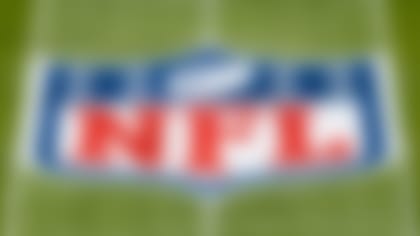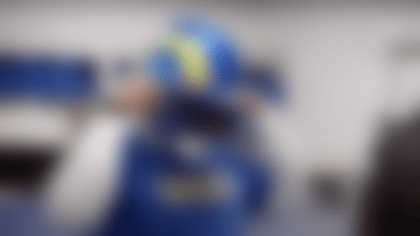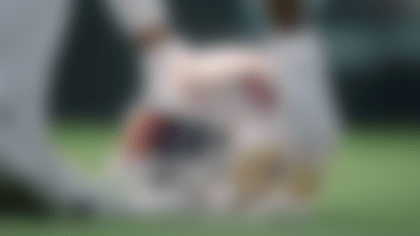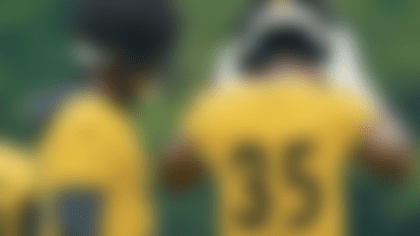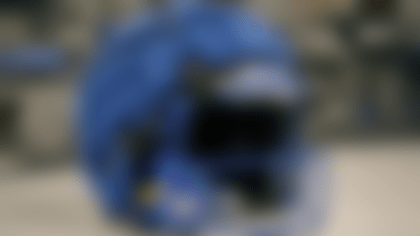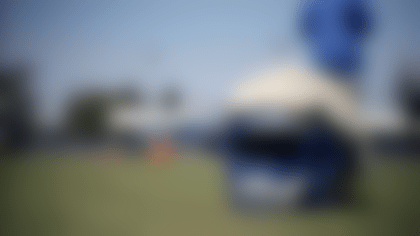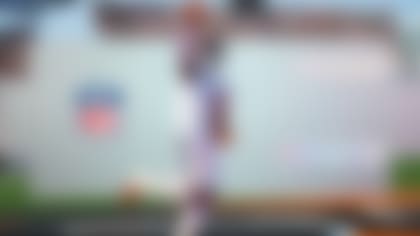Seeking to Make Artificial Turf Safer
For decades, engineers in Detroit have improved auto design to reduce the impact of crashes.
That expertise is now being applied in an effort to improve synthetic turf systems on sports fields.
Viconic is the company that's leading the project to develop an impact-absorbing layer under synthetic turf. This layer of bubble-like plastic knots crushes efficiently during impact, then quickly returns to its original shape to absorb the next impact.
"The shock pad goes underneath the artificial turf and provides an additional layer of energy absorbing capability," said Joel Cormier, Viconic's Director of Development Engineering.
"The goal is reduce the forces that your body experiences from impact with the playing surface," he said.
This Viconic project was one of three final winners in the Head Health Challenge II, sponsored by GE, Under Armour and the NFL.
"If we can reduce injury in automotive, hopefully we can do the same thing for synthetic turf," Cormier said. "We see potential for the product to be used everywhere from youth soccer to the NFL."
Testing Natural and Synthetic Field Grass
At the Center for Safe Athletic Fields at the University of Tennessee Knoxville, researchers are seeking to create safer fields, too.
Using 60 mini-fields with different mixes of natural and synthetic grass, and applying other variables such as field surface conditions, infills, underlayments, climate conditions and shoes, researchers at UT assess both performance and safety. It is here that Viconic is implementing its new system under the synthetic fields to help evaluate its impact on improving safety.
Tennessee offers an ideal location for this kind of research. John Sorochan, PhD, who's a professor at the UT Center said, "We're in the transition zone. We can grow all grasses here. Whether it be cool season grasses, or Bermuda Grass. It's a nice geographic location for us to do this type of work."
Sorochan said researchers at UT grow and test many of the grasses used in NFL stadiums and practice fields.
"Our goal is to conduct tests to try to keep athletes safe in various field conditions," he said. "Player impacts happen in different ways. There's impacts from falling, heads hitting the ground—we want to minimize the severity of the impact but not take energy away from them as they're running down field."
Guidelines for NFL Fields
Elsewhere, engineers, physicians, turf scientists and infill surface manufacturers are also collaborating on "Game Day Surface Guidelines" for all NFL fields.
The NFL's Musculoskeletal Committee oversees and analyzes biomechanical research and injury data and shares this information with shoemakers and artificial turf manufacturers.
With the committee's recommendations, turf manufacturers have taken steps to standardize the characteristics of turf—such as surface hardness and the depth of sand below the turf—in order to try to decrease injuries.
In 2016, the NFL and NFLPA established the Field Surface & Performance Committee, a joint committee to provide advice and guidance regarding the safety, performance and testing of game day and practice surfaces. This new joint committee will perform research and advise the parties on injury prevention, improved testing methods and the adoption of tools and techniques to evaluate and improve field surface performance and playability.

